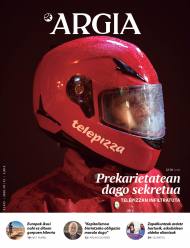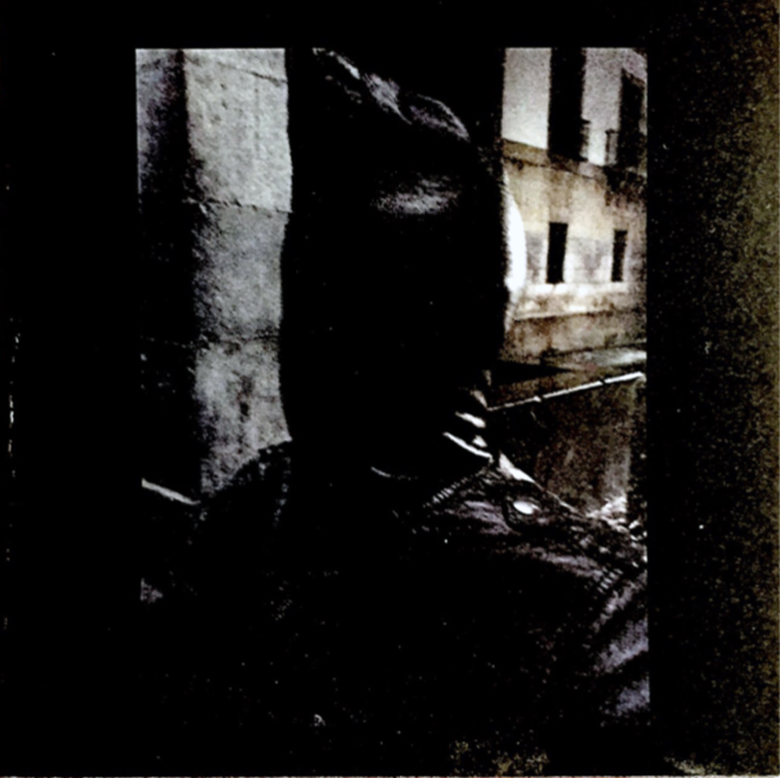Improvisation formulas 25 years
- It is 25 years since the Zirara jazz improvisation albums collection was published and 20 years since the Plaza jazz improvisation festival was created. Behind the two was the Jazzle music school in San Sebastian. The concern to know these two initiatives and not to be forgotten has led us to the house of Alberto Lizarralde.
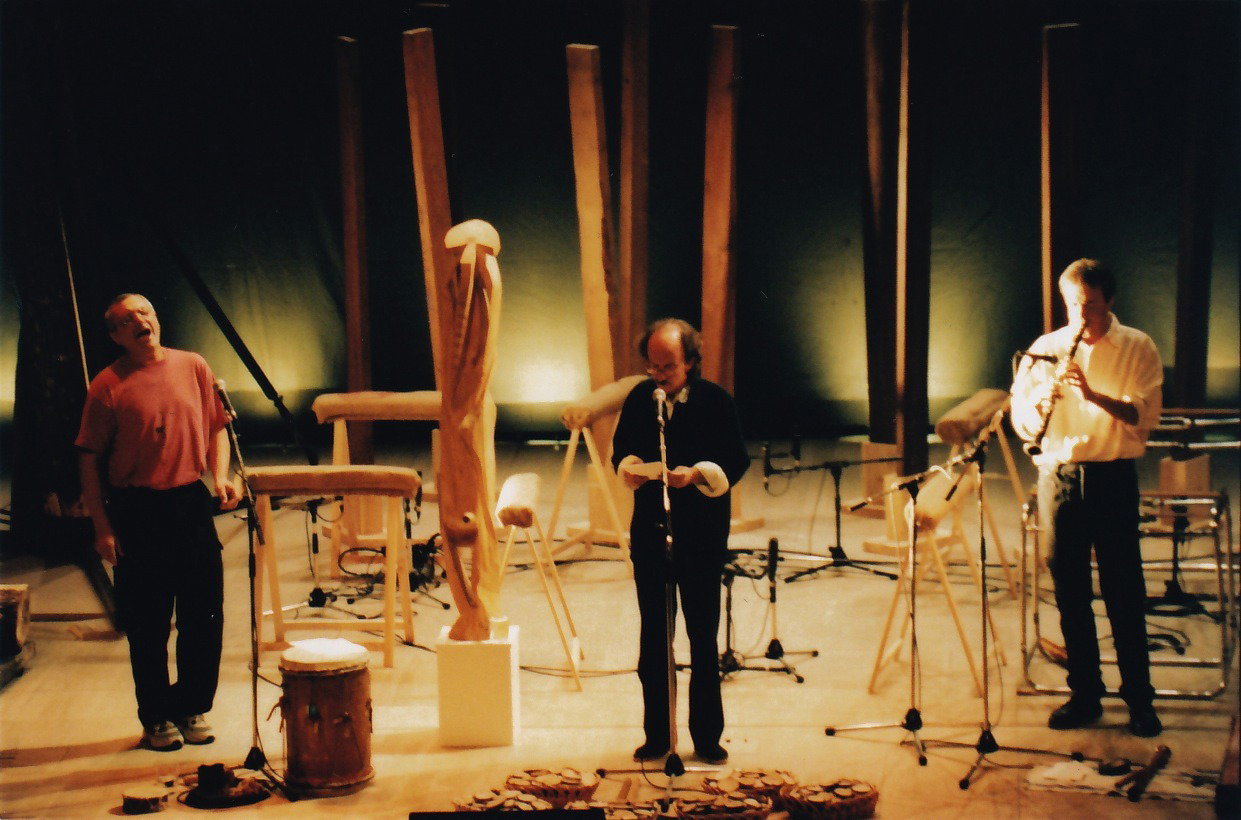
It happens more than you want, that the project you might be interested in is totally unknown to most people. In other words, they receive less attention than is necessary. Lizarralde's projects seem to have that destination.
Alberto Lizarralde is one of those hidden treasures that Basque culture has. Unknown to the public, but full of projects, anecdotes and wisdom. He is one of the founders of the Jazzle Music School, where in addition to a guitar and harmony teacher, he was the coordinator of all the projects and sauces that were created around the school for 25 years. A few years ago Ikimilikiliklik. J.A. Arce's universe was, among others, the director of a great video show.
Collection of prints 4+7
The Jazz School was born in 1988 with the vocation of promoting modern music in the Basque Country. From the beginning I wanted to be more than a school and, as a result of many years of work and reflections, the idea of creating a collection of records emerged.
The label Elkar had already published some jazz record in Iñaki Salvador, but in Euskal Herria nobody produced jazz records. Lizarralde has underlined the importance of producing. “Here many times the technician becomes a producer, but they are different roles and they rarely get married well.” The uniqueness of the Irudiara project lies in the fact that they introduced their hand to the artist's creations, made adaptations and proposed concepts: “It was an artist’s work, but we sent it to us.”
Artists were treated strangely. Jazzle didn't pay them a penny, but the artist shouldn't pay anything either. In return, they offered them the possibility of creating a special album and a new way of working. “Of course, they were copyright and a set of physical copies.”
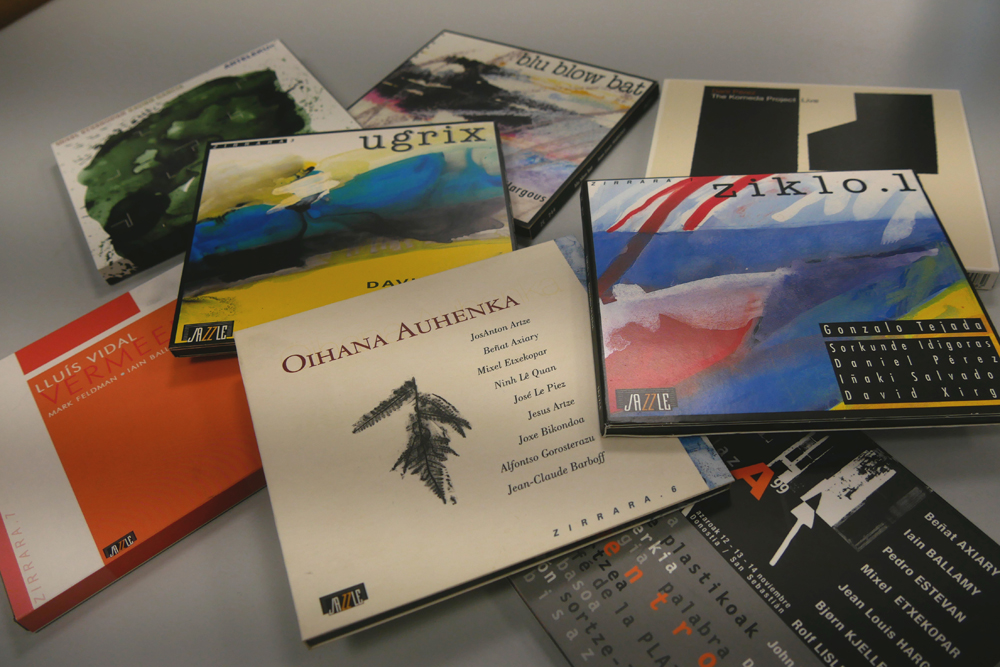
Since its inception, Titara wanted to be a sound map of what was being done in Euskal Herria, and in the words of Lizarralde, composed primarily of Basque musicians: “We never wanted to call ourselves a jazz record, but an improvisation record.” The works were carried out by painter Laura Esteve, keeping the same idea in her first four albums.
The production was carried out by Lizarralde and Sorkunde Idigoras himself, a musician and one of the creators of Jazzle. “The role of Idigoras was fundamental, both in Ciriza and in the Plaza. We understand each other perfectly, and if he said something about composition, I always settled.
His first album was Zikl1, by double bass player Gonzalo Tejada. The artist was asked to present a project and to prepare it for months, “sending the cassettes by mail, by telephone… today it would be unthinkable!” “Here we had everything. For example, Tejada brought a new sketch for the album to be sold more or less. It didn't make any sense, and we said no. Selling the album was our responsibility and our risk.”
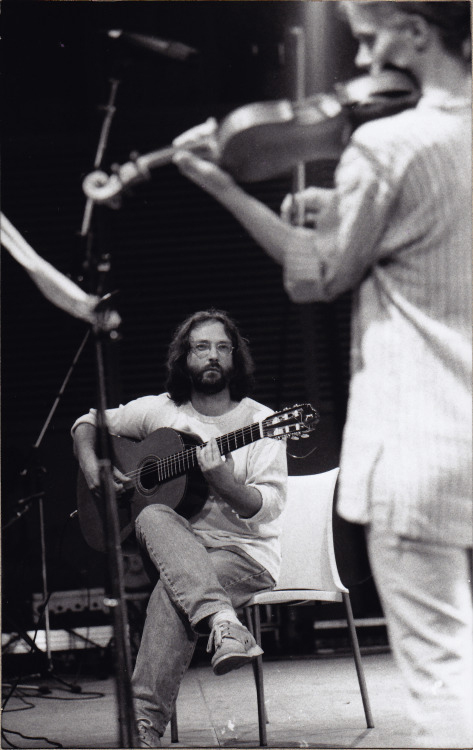
The second album was the 13 solo album by Angel Unzu. “For a long time we worked songs by Jazzl Angel, we changed stanzas, we stretched, we added percussions… it was a wonderful process.” Lizarralde has stressed that Unzu is a guitar teacher, who no one plays with such certainty. He recorded a record of thirteen songs in one day, with all the percussions, all the guitars -- it's amazing considering the perfection that is needed in the studio.
With the David Xirgu battery, the situation was different. Xirgu wanted to make his first album and put it to Jazzle. With Xirgu, for example, a jam session was held in Donostia’s Etxekalt prior to the recording session. According to Lizarralde “it’s one of the best things we’ve ever seen in life.” The musicians did not know each other and were willing to go to the studio with that point of nervousness and concentration. All three continue to play together.
The three albums received very good reviews. They came to the Jazz Magazine of France, for example, “they were very specialized magazines and it was difficult to reach them.”
Stage change
The fourth album, was the most personal experience of Lizarralde. Jean-Louis Hargous presented them with a project with a CD that he himself recorded at home. At first, though they didn't see it very clear, one day they talked about Kenneth White's geopoetics. Among his books they found a poem of Basque whalers with which they began to work until they came to the proposal of mixing jazz and ancient music.
Artists were treated strangely. Jazzle didn't pay them anything, but the artist wouldn't pay anything either. In return, they offered them the possibility of creating a special album and a new way of working
From the poems a trip was organized, all written: “In the first song there will be the four saxons and if in the battery the tension of the patches is eliminated, in the second song there will be an interview between these two ... and everything like that.” Musicians met for the first time on the eve of the study.
Once everything was recorded, the tracks were disassembled and made a freer assembly, fitting the pieces here and there. Once the master's degree of the album was completed, a copy was sent to White, but apparently he did not like it and removed the permission to enter his poems on the album. They had no choice but to remove the album without reciting: “With that we spent more money and sold less.” The project needed an evolution.
Creation of the plaza
The Plaza festival, which will be held for the first time in 1999, pursues two main objectives: on the one hand, it wants to be a festival of creating new shows and projects, and on the other, everything that was done there was recorded in high quality with the possibility of editing in the future. Thanks to this idea, they were able to publish their future work.
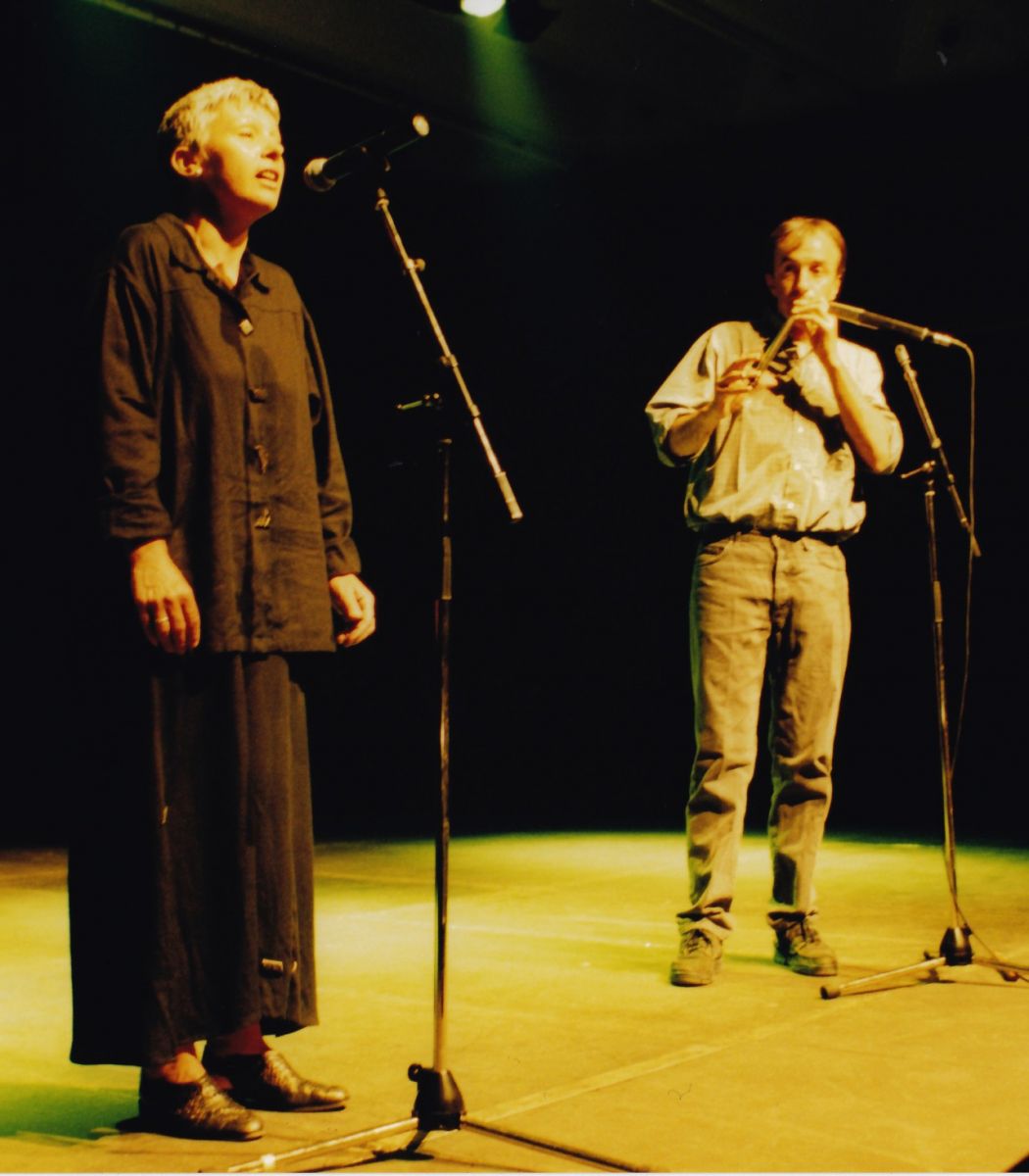
This happened with the show of Joxan Artze Oihana Auhenka. While Beñat Achiary sang the bird, Mixel Etxekopar in the flute, the Vietnamese Ninh log Quan in the percussion and Jesús Artze in the txalaparta, José Le Pilak sounded his hands moistened with curious “loud” sculptures and above all Joxe Bikondoa and Alfonso Goroazco. Today, in the Kursaal of Donostia-San Sebastian, we cannot see a spectacle of this kind, specially created for the festival.
The show was recorded in the image and Lizarralde himself recognizes that the quality of the image was not what they expected when they saw the video. Grieved, he threw himself over the canapé with his hands on his eyes. “Then I started listening to the poems of Artze, and the birds of Beñat and Mixel -- and I understood that we could only work with audio.” He called Idigoras, and convinced of that, they launched this special avant-garde work by Artze in his disco-book.
The festival was held in Donostia-San Sebastian between 1999 and 2003, and thanks to it, seven other albums were published. The Komeda Project Live, based on films by Roman Polanski, Lluís Vidalen Vermeer, the traditional flutist Mixel Etxekopar and the gathering of beat-maker Xavier García, the post rock poem of Miztura and two beautiful collections of improvisations from the Café de la Plaza.
Plaza de improvisacion
The festival worked two paths: on the one hand, it prepared custom shows, creating bridges for local artists to collaborate with Europeans, for example, making rooms to cooperate. On the other hand, the improvisation exercise Café de la Plaza was carried out.
The audience didn't know beforehand who was going to play, but the room was always crowded with people. It involved experiments or games based on improvisation. Lizarralde and Idigoras chose two or three artists and challenged them: here you have the first notes of the song Itsasoa laino dago, which they play and from there what you want.
“Sometimes they didn’t go well, of course. But we live in truly magical moments that have fortunately been recorded.” Evokes the case of the violinist Iva Bittová: “Because of the journey, Mrs. Bittová was sleeping and ten minutes before she refused to meet saxophonist Iain Ballamy. The two went onstage without crossing a word, each with their instrument in the box. As soon as he got in position, Bittová started singing and violin, and Iain went after him with the saxo. It was about fifteen minutes, but I never wanted to end ... When Iain left, I was perplexed and whispered that I was a witch, that I had bewitched her...”
Many of the great names of the Basque scene also made their way through the Plaza. Besides Miztura, they will also be in Zinemaldia Maite Arrotajauregi, Ruper Ordorika, BEÑAT Achiary, Mixel Etxekopar, Maddi Oihenart and Jabier Muguruza.
A place too small to work with older people
In three years, the Plaza organized a lot of shows, not only related to music. Theater, performance, etc. They were also part of the festival and on many occasions, being a breaker (truth) provoked controversy.
Asked how and why it was ended, the answer has been clear: “Well, as all things are done, suddenly and for many reasons.” Due to a disease that prevented them from organizing the 2004 edition, they decided to suspend the festival.Para so they
already had the support of many parties and institutions – of “all colors” says Lizarralde with amazement – but felt that they did not fit fully into the style of the big festivals of the city and the surrounding area. “The galas, the presentations, the public exhibition... it is necessary, but for us that was a tremendous anger.”
The Plaza festival, which was held for the first time in 1999, had two objectives: to be a festival of creating new shows and projects and to record everything that was done in it in high quality.
He also remembers how the big ones treated them: “Sorkunde Idigoras went to a festival with the first four albums of Talka, and his director took the four albums and put them under the 20 collections of records that came from New York. ‘When they end up hearing what you have,’ he proudly said. Because it was a woman I had to endure.”
At another festival, he was accused that what had been presented was not Basque music. By saying that the musicians were Basque “[Gorka] Benitez, [Daniel] Pérez... those last names are not very Basque”. In Lizarralde’s opinion “there was a lot of competition between festivals and since the place of the Plaza was not defined at all, everyone saw us as a competition: the world of jazz, dance...”.
The Jazzle left a good harvest in the Irudiara collection. The experimental, alternative and underground music of the current Basque scene has much to learn. Especially the way things are done. Production and collaboration were based on the creation of an innovative sound map during the ten-year period of the project. With electronics, jazz, old music, post-rock, folk and poetry to the limit, never worrying about the results.
We need creators, artists. But we also need organizers and producers who engage with creators and who guarantee artistic vision above all limits. They should contribute to liberating the creativity of the chains that have it linked, that is, money, by inventing the formulas necessary for it.
The interview has left us a lot of interesting and inspiring anecdotes that don't come in here. Before leaving, he has once again reminded us – fleeing the prominence that is so common in Lizarralder-: “Do not forget to mention the name of Sorkunde, please. If it wasn’t for him...”









